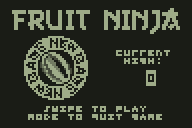It has been a while since Kerm Martian revolutionized the Texas Instruments calculator community with his CALCnet software and the global CALCnet protocol, which was the first step towards allowing TI programmable calculators to use the Internet. Several months later, CALCnet is the most widely used networking protocol for performing calculator-to-calculator communication, as well as calculator-to-Internet communication. It has been used in games (like "Obliterate"), chatting programs (like "CHAT"), a fledgling browser ("Gossamer"). Many more are on the way.
Kerm has announced that he intends to redesign CALCnet to make it more feature-rich and to possibly remove the need for software to be running on a computer. Currently, you need to have a program running on your computer while your calculator is plugged in to access the Internet. While CALCnet currently has no vulnerabilities, when these changes are made, some may be introduced that would allow others to send "malware" to your calculator.
Why, you may ask, would someone do this? Well, there are some people who would do it just because they can. Or a jealous classmate who wants to do better than you on a test and decides to install something that will mess with your calculator's mathematical ability (changing the number of decimal places it rounds to, or making all answers off by a certain percentage). For your information, these types of "malware" already exist, as pranks, but require physical access to the calculator you want to install them on. But CALCnet may change that as it develops. Every new technology can be used for evil.
So, I endeavored to create a Firewall and Malware detector. This program will intercept CALCnet packets and check the sender ID against a list of blocked calculators. If the sender is on the list, the packet gets cleared immediately and never reaches your calculator. For now, you will need to add and remove entries from your block list manually, but when I learn about the new CALCnet design, I will endeavor to allow this program to automatically connect to CALCnet, and download a block list filled with "known threats".
My program will also have a malware scanner. "Prank" programs that can actually cause your calculator (or your grades) harm, such as the OFFBY1 virus (a program that makes all answers be off by plus or minus 1), will be scanned for, as well as tidbits of code that can cause physical hardware damage. These will be included in a "virus definitions file" that comes with the program. For now, you will need to check the site for updates yourself, but again, once I learn about the new CALCnet design, I will endeavor to have this program update the virus definitions automatically.
Check out my project page for more:
http://clrhome.org/blastav/.
 ²
²
 New online editor in beta
Like calculator programming? Spend a lot of time online? Following the success of the online ORG assembler, ClrHome is announcing the new Integrated Editor System, an online IDE for TI-BASIC, Axe, and Grammer projects. Integrated image and code editors with inline sprite editing, autocomplete, and many other features helps to simplify programming for calculators online.
New online editor in beta
Like calculator programming? Spend a lot of time online? Following the success of the online ORG assembler, ClrHome is announcing the new Integrated Editor System, an online IDE for TI-BASIC, Axe, and Grammer projects. Integrated image and code editors with inline sprite editing, autocomplete, and many other features helps to simplify programming for calculators online.
 ORG autocompletes!
The ORG online Z80 assembly IDE is now better than ever with such essential editor features as syntax highlighting and instruction autocompletion. As always, the webapp allows you to manage, host, and build your Z80 projects online for a variety of platforms. Or you could simply use it as an easy way to play around with Z80 assembly without ever having to install an editor or assembler.
ORG autocompletes!
The ORG online Z80 assembly IDE is now better than ever with such essential editor features as syntax highlighting and instruction autocompletion. As always, the webapp allows you to manage, host, and build your Z80 projects online for a variety of platforms. Or you could simply use it as an easy way to play around with Z80 assembly without ever having to install an editor or assembler.
 Fruit Ninja released
One small experimental calculator project turns out to be far more successful than first hoped. Besides featuring some highly detailed 3D animated graphics, the Fruit Ninja project introduces a strange but satisfying new way to play calculator games—by swiping your fingers across the keypad, as if it's a touchscreen on your calculator.
Fruit Ninja released
One small experimental calculator project turns out to be far more successful than first hoped. Besides featuring some highly detailed 3D animated graphics, the Fruit Ninja project introduces a strange but satisfying new way to play calculator games—by swiping your fingers across the keypad, as if it's a touchscreen on your calculator.







 The image here is a mockup of the title screen to the upcoming game Maximum Security. As with a lot of other things in the game, the highlight around START will be another unnecessary animation in the actual program, which I'm working on now. This idea got big fast—it was originally meant to be a quick little project to prove I'm still alive, and here we are a year later!
The image here is a mockup of the title screen to the upcoming game Maximum Security. As with a lot of other things in the game, the highlight around START will be another unnecessary animation in the actual program, which I'm working on now. This idea got big fast—it was originally meant to be a quick little project to prove I'm still alive, and here we are a year later! Look, I know there are tons of helpful little programs on ticalc.org, and many of them do exactly the same thing. I realize that unit converters are a lot like the many other types math/science utilities swamping ticalc.org. Just like quadratic solvers, these things have so burdened the famous calculator file archive that there's a whole category dedicated to them, all in TI-BASIC and all for the TI-83/84 Plus series. (For the record, I have a quadratic solver there too—click if you dare.)
Look, I know there are tons of helpful little programs on ticalc.org, and many of them do exactly the same thing. I realize that unit converters are a lot like the many other types math/science utilities swamping ticalc.org. Just like quadratic solvers, these things have so burdened the famous calculator file archive that there's a whole category dedicated to them, all in TI-BASIC and all for the TI-83/84 Plus series. (For the record, I have a quadratic solver there too—click if you dare.) Our online TI-BASIC/Axe/Grammer IDE just got a major update. Among the new features are editors for 8XL (List) and 8XM (Matrix) variables, as seen in the screenshots on the right.
Our online TI-BASIC/Axe/Grammer IDE just got a major update. Among the new features are editors for 8XL (List) and 8XM (Matrix) variables, as seen in the screenshots on the right. As always, you can either drag-and-drop an appropriate file into the webapp or create a new list or matrix using the + tab. Both editors take the form of a simple chart, allowing you to edit list/matrix elements individually or the entire structure at once, using TI-BASIC syntax (such as {1,2,3,4} for lists and [[1,2][3,4]] for matrices).
As always, you can either drag-and-drop an appropriate file into the webapp or create a new list or matrix using the + tab. Both editors take the form of a simple chart, allowing you to edit list/matrix elements individually or the entire structure at once, using TI-BASIC syntax (such as {1,2,3,4} for lists and [[1,2][3,4]] for matrices).
 Here's the gist of the game. You're trapped in a series of rooms, and you want to get out through a series of doors. There are also turrets programmed to shoot at you so you don't get out.
Here's the gist of the game. You're trapped in a series of rooms, and you want to get out through a series of doors. There are also turrets programmed to shoot at you so you don't get out. The Integrated Editor System will be a complete IDE for TI-BASIC, Axe, and Grammer projects. (Other languages may be supported in the future.) Though there are still many things to be added, the features I've been testing for the Axe mode already promise to make IES a far more ambitious project than even the ORG assembly IDE.
The Integrated Editor System will be a complete IDE for TI-BASIC, Axe, and Grammer projects. (Other languages may be supported in the future.) Though there are still many things to be added, the features I've been testing for the Axe mode already promise to make IES a far more ambitious project than even the ORG assembly IDE.





 That was the case for syntax autocompletion. With PHP naming convention being the monster it is, typing the first few letters of a function name and choosing from a list of options had long since become a familiar task. Since only certain combinations of arguments are allowed for each mnemonic in Z80 assembly, a similar feature would be even more useful for a Z80 IDE.
That was the case for syntax autocompletion. With PHP naming convention being the monster it is, typing the first few letters of a function name and choosing from a list of options had long since become a familiar task. Since only certain combinations of arguments are allowed for each mnemonic in Z80 assembly, a similar feature would be even more useful for a Z80 IDE.